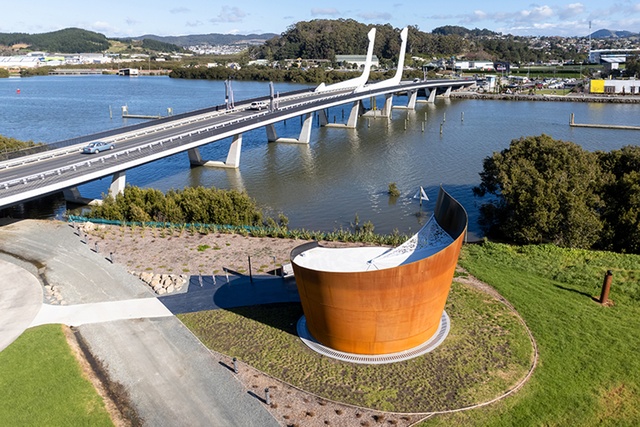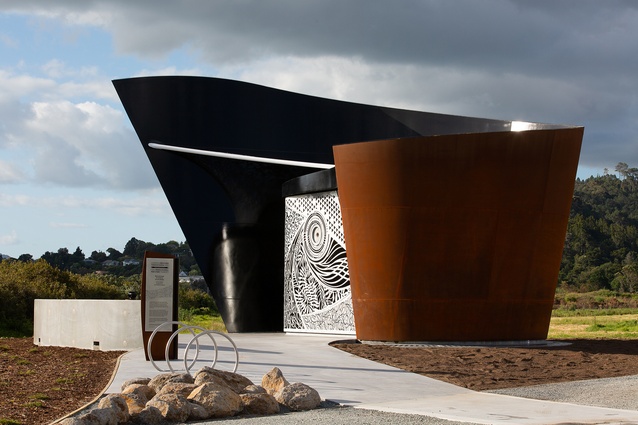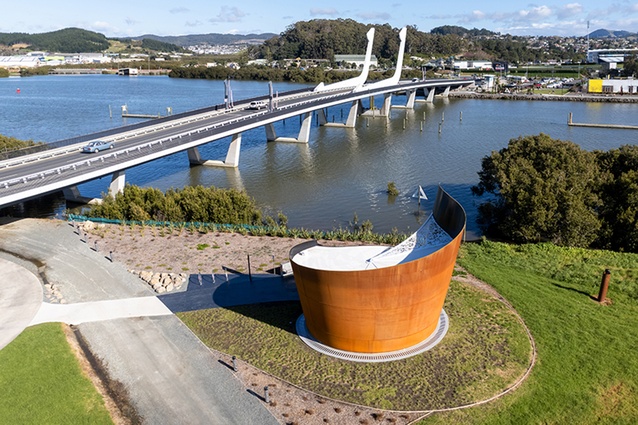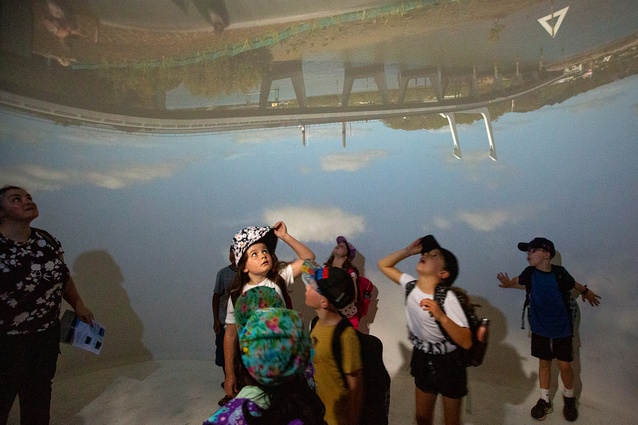Timatatanga Hou Camera Obscura wins mention at the 2021 Architecture MasterPrize
Whangārei-based practice Felicity Christian Architect has received an Honourable Mention at this year’s Architecture MasterPrize for its project Timatatanga Hou Camera Obscura.
The 8-metre-tall spiral steel structure, which houses an accessible, interactive art and education experience, was inspired by designer and photographer Diane Stoppard’s passion for pinhole photography. Together with architect Felicity Christian and sculptor Trish Clarke, Stoppard engaged with the Whangārei community to produce the project, which weaves together Māori and pākehā stories from the area and is a live photographic gallery destination.

“The exterior form and selection of materials are inspired by the hull of a ship and Whangārei’s shipbuilding history,” explains Stoppard. “The decorative panels – a collaboration between artists Trish Clarke and Poutama Hetaraka – tell the stories of the river from a Māori and European perspective and the white spiral roof represents a snail form and lens aperture, while the white, cut-out canopy reflects the mangroves that sit at the water’s edge.
Practice principal Felicity Christian says the camera obscura was perhaps the most complex small project she has worked on, “taking six years in the planning, design, funding and construction, but we’re all very happy with the outcome.”
Christian says that Stoppard’s vision dates back to 2011, when she first mooted the idea of building a camera obscura (Latin for dark room) “to put the city of Whangārei on the world map”. But the success of the project was reliant on it having something significant to look at.

The construction of Te Matau ā Pohe bascule bridge in 2013 provided the perfect subject to view from the interior of the obscura. “We wanted to celebrate the international award-winning Te Matau ā Pohe and do justice to the bridge by creating a beautiful sculptural piece to sit alongside it,” says Christian. “The site and orientation of Timatatanga Hou Camera Obscura was carefully arranged to optimise viewing of the lifting of the bridge from within the interior space.”
Christian says the team is delighted to have received an Honourable Mention at the prestigious Architecture MasterPrize and to be recognised internationally for the sculptural building. She says the freely accessible, interactive experience is enjoyed by both the local community and tourists from around New Zealand and the team is looking forward to the day when international visitors will be able to visit it too.














